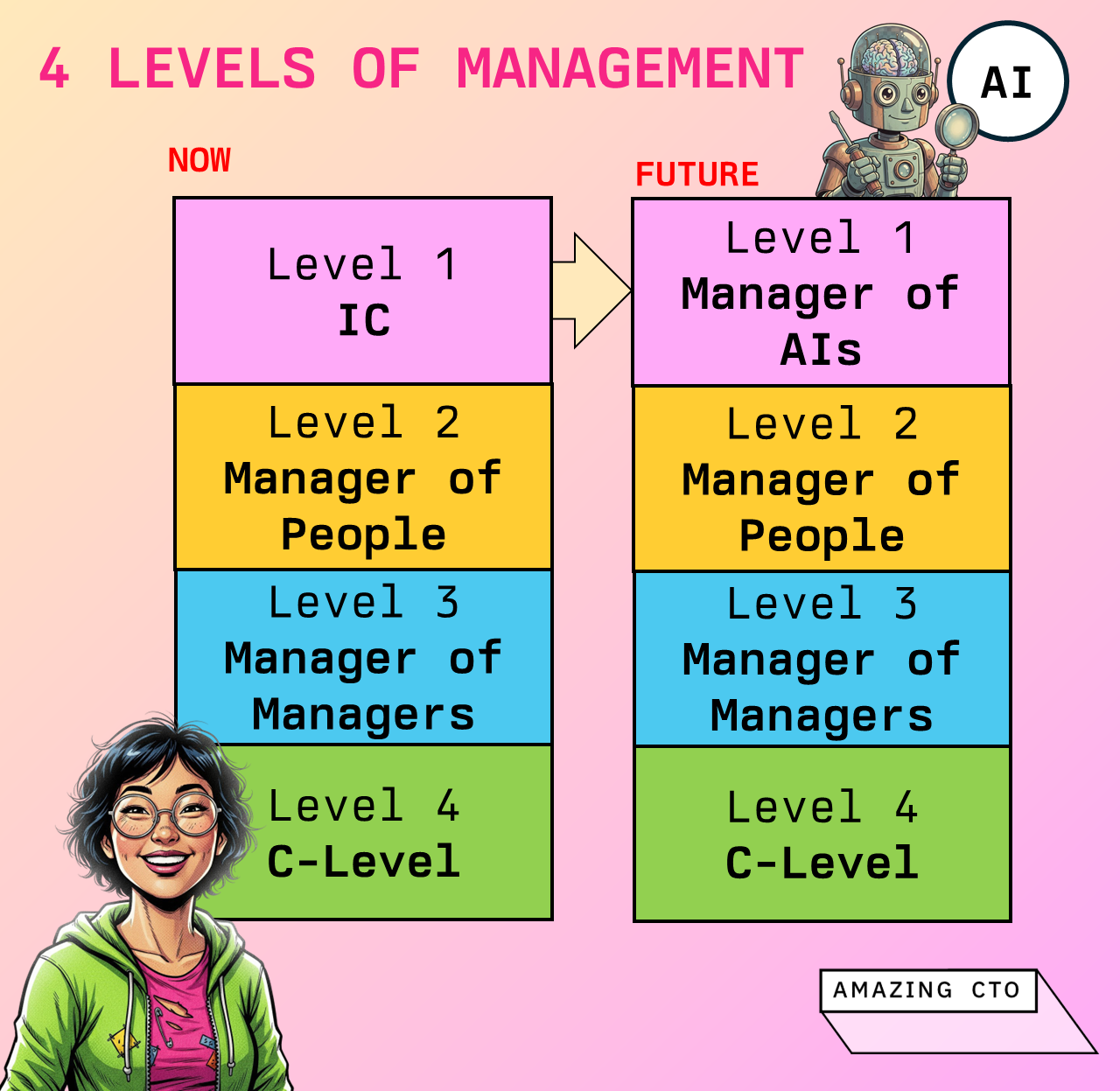Stephan Schmidt - October 16, 2025
Four Levels of Management
Mastering the Four Levels of Management: From IC to C-Suite
TL;DR: CTOs must evolve through four management levels, with each requiring fundamentally different skills: from doing the work yourself (IC), to managing people directly, to managing through multiple layers of managers, to ultimately stepping back from departmental management entirely to focus on cross-company strategic challenges as a C-suite executive. The biggest mistake leaders make is trying to apply skills that worked at one level to the next—what made you a great IC won't make you a great manager, and being hands-on with your department will prevent you from succeeding as a CTO.
The question to a manager is often: How many people have you managed? What was the biggest department you managed?
Which from my perspective, and years-long experience as a manager and especially as a CTO coach, is the wrong question.
There are four levels of management:
- Individual contributor (IC) managing your own work
- Manager of managing people
- Manager of managing through people
- Being part of the C-suite
Each level is a bump, and a steep learning curve, because something substantial changes.

When you’re an IC, managing is easiest. You only need to manage yourself and your own work. The challenges are to finish your work with acceptable results. You might get pushed for tighter deadlines. You follow the rules.
The IC role is changing rapidly in the face of AI. From an individual contributor who controls their work, the developer now becomes a manager of AIs. AIs are working for the developer; their work needs to be scheduled, coordinated, reviewed and optimized, just like a manager of Level 2 would do in the past with developers. There are no ICs left in the company of the future, only managers.
On the second level, the game gets more difficult. You no longer can control outcomes by working harder or spending more time. You need to be able to make others deliver results. Because this is such a difficulty, many managers jump into work headfirst when problems arise, and do their team’s work, instead of making the team deliver results. You need to learn to get outcomes without doing the work. You also need to learn that as a manager you’re expected to change the rules you can change. What brought you to level two, being the best IC, does not help you as a manager.
On the third level, again there is a steep learning curve. Unlike on level two, you can no longer tell people directly what they need to do. You can’t say “Write more tests”, you need to get your managers to get their teams to write more tests. From the trainer on the sideline you become a snooker player; you need to play it off the cushions instead of directly. There are many sub-levels to this. There can be more than one management layer between you and those doing the real work. On this level you find Heads of Development, Directors of Engineering, and VPs of Engineering.
On the fourth level, you don’t manage your department at all. This usually happens when you enter the C-suite as a CTO. You’re now expected to challenge other people and departments, be a team player on the management board level, solve business problems. Your department needs to run on its own, your direct reports (e.g. VPs or directors) need to be able to execute on their own. Many of my CTO clients struggle because they see themselves still as the developer in the room, the techie, the nerd, representing their department instead of the whole company.
About me: Hey, I'm Stephan, I help CTOs with Coaching, with 40+ years of software development and 25+ years of engineering management experience. I've coached and mentored 80+ CTOs and founders. I've founded 3 startups. 1 nice exit. I help CTOs and engineering leaders grow, scale their teams, gain clarity, lead with confidence and navigate the challenges of fast-growing companies.
